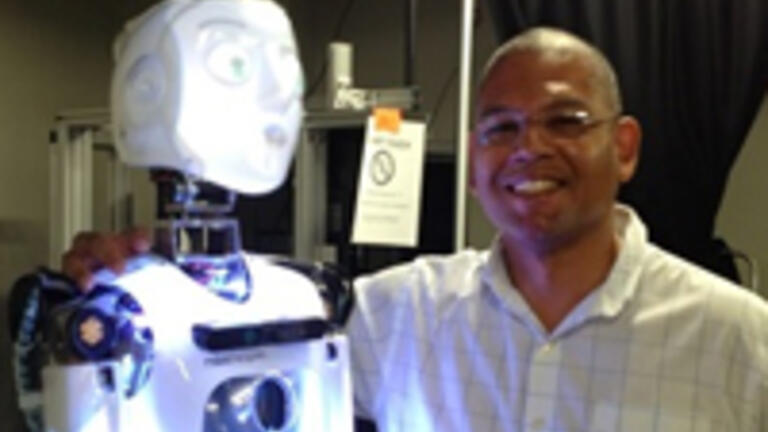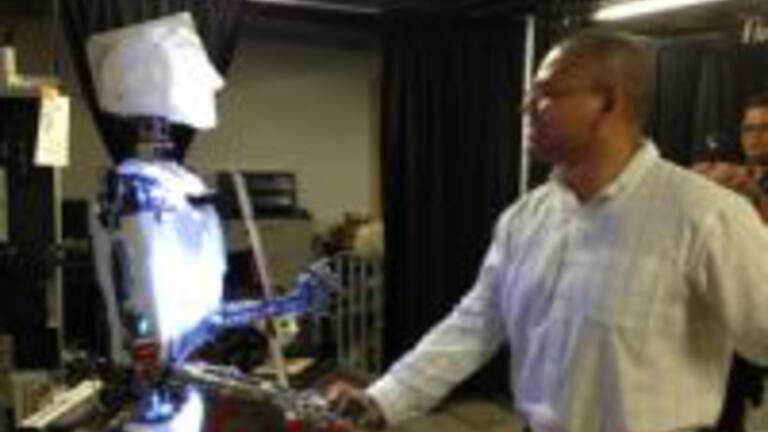
Dr. Keith Hunter Takes Part in Immersive Simulations

At the SREAL lab, Dr. Hunter experimented with TLE TeachLive, a mixed-reality teaching environment designed to train teachers in pedagogical techniques, rhetoric and content. The virtual reality classroom displays avatar students whose voices, questions, comments and nonverbal expressions span a broad range of student behavioral types. The challenging immersive simulation teaches people to combine their specialized knowledge of their field with the necessary pedagogical skills and unpredictable factors of human behavior.

Dr. Hunter also spent time with IST’s “RoboThespian,” a robot the lab uses to explore control of mobile robots in remote environments. “The scholars, research faculty and doctoral students present discussed fascinating engineering challenges they face,” said Dr. Hunter.
Dr. Hunter, a doctor of organizational behavior and management, says it is essential for educators to understand the models people make of the world around them. “Cutting edge technology is changing the future of education,” he said, “and these scholars are literally engineering the way humans experience worlds both real and artificial. Some people may wonder why an organizational behavior scholar like me would want to hang out with robots and avatars, but it’s no mystery to me. Places like IST are revolutionizing the way we build immersive learning environments and operate in virtual teams by drawing not only from engineering disciplines but also from the social and behavioral sciences.”